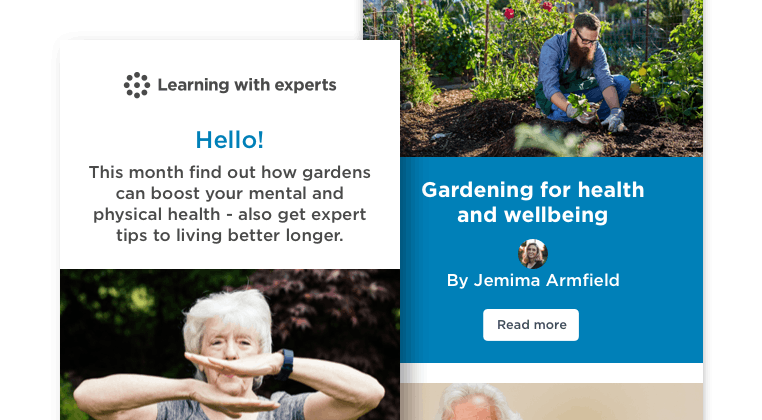Is working from home a pain in the neck?
By Geoff Harris •
Working from home has rocketed during the pandemic and a lot readers will still not be regularly going to the office.
While there are many advantages to this – no tiring, expensive commutes, no annoying colleagues with leaky earphones – there are also downsides. As well as less social contact and less chance to bounce ideas around (or go for after-work drinks), if you don’t have a proper desk and computer set-up at home it could be damaging your posture. A recent study by Bupa found that since the first lockdown in March, 11 million people have suffered aches and pains due to working from home. Only a third have a dedicated workstation, leaving many working from sofas, beds and even beanbags!
To ensure you don’t suffer from aching backs and shoulders after a day hammering the keyboard at home, here are some useful tips.
1) Identify the problem
Health and safety regulations in the workplace are now pretty strict, so chances are your employer has been forced to invest in adjustable chairs and decent desks, along with some kind of wrist support. If you are now forced to work at the dining room table, it’s highly unlikely you are set up to work ergonomically. Fortunately Cornell University has put together a quick and simple guide to setting up your monitor, keyboard, mouse and chair here
Some of the tips sound like common sense but are easy to forget – for example, “keep your elbow close to your body and allow your arm to relax while you use the mouse… this prevents overreaching and twisting of the shoulder, arm and wrist.”
2) Check your posture
At lot of us have quite poor posture even when using quality office furniture, but this can be rectified. A good tip is to get somebody to take a photo of you as you are sat working at the computer or on paperwork. You should be able to draw an imaginary line down from your chin to your sternum, or very close. If you are developing poor posture, check that your seat or desk can be adjusted, and particularly that your seat is high enough. If not, you may need to talk to your boss about getting a better chair; self-employed people will need to cough up for one themselves, but your accountant should be able to offset it against tax, as a genuine business expense. That done, make sure you take regular breaks and try and stretch. A simple ‘plank’ is a great way to get a stronger core (which helps avoid back pain), and if your back is getting worse and the plank feels too demanding, check out these simple, safe exercises on the NHS website.
3) Stick your neck up
If you really do find working from home to be a pain in the neck, you might be hunching or slanting your neck forward, which puts excessive strain on the spine. As the neck finds it harder to hold your head in position, you get a muscle inbalance, which leads to discomfort. Chin tucks can help: sit up straight, keeping your chin parallel to the floor. Then, slowly move your head and chin backwards, taking care to avoid tilting your head. Push your head up (away from your neck) as if you were beng pulled up, but make sure your jaw is relaxed.Hold the position for three deep breaths
4) Painful wrists
You may have heard of a chronic medical condition called Carpal Tunnel Syndrome, caused by strain on the tendons in your wrist. It can get debilitating, affecting your everyday life through tingling and weakness. To avoid getting this as a result for working from home, keep your wrists as flat and straight on the desk as possible, making sure they are not bent left or right. Again, you might need to invest in an ergonomic keyboard and mouse to keep your wrists in a healthy position, but it could be money very well spent. The most important thing is to keep your hand and forearm in a straight line.
5) Sore eyes
Apart from ensuring you have a decent computer screen at home – again talk to your company if you need to upgrade – it is important to take regular screen breaks. Ensure your monitor is angled properly and is not too bright or dim; check the user manual online if necessary. Another good tip is to take a 20-second break to view something 20 feet away every 20 minutes. Set the alarm on your phone or keyboard if necessary (this advice is validated by many national optometric associations).
Another good to tip is to try and have work near a window, rather than relying on artificial light, and have the window at a 90-degree angle to your screen, rather than right behind you. Make sure you get your eyes regularly tested too.
6) Beyond work…
As mentioned in a previous blog on the benefits of yoga, this ancient art is now more accessible than ever via online meetings, and more and more physical classes are resuming too. So if you are finding more aches and pains as a result of working from home, going to a yoga class will keep you supple and help relax muscle. Massage is a great way to relieve aches and pains, too; I swear by traditional Thai message or Japanese Shitatsu body work, but it’s not that cheap. Or just go for a bracing walk before or after work every morning, or a run, or keep up whichever fitness and stretching routine works for you.
Stay updated
Receive free updates by email including special offers and new courses.
